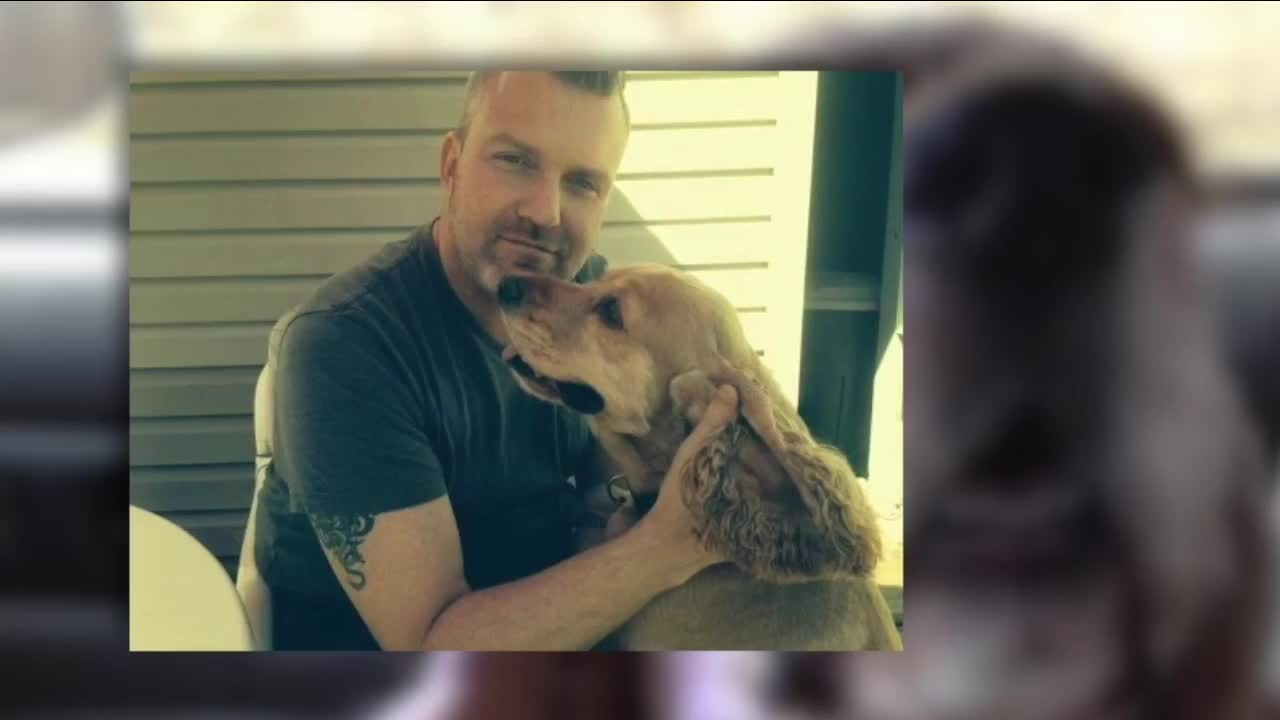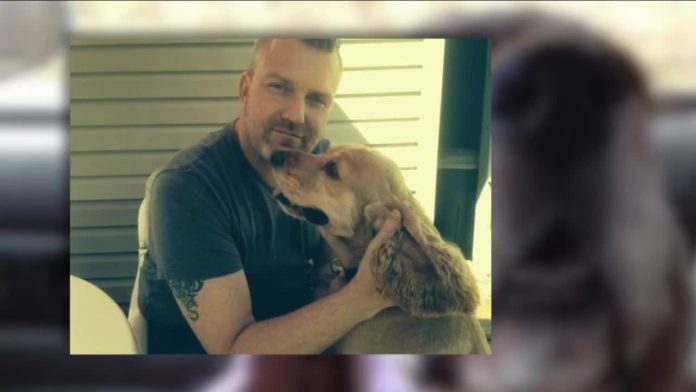
AccuWeather
More eruptions likely as Caribbean volcano turns tropical paradise into ‘battle zone’
Another huge explosion rocked the island of St. Vincent early Monday as the La Soufrière volcano keeps erupting. The volcano spewed a tremendous amount of ash and hot gas in the biggest explosive eruption yet since volcanic activity began on the eastern Caribbean island late last week. Experts called it a “huge explosion” that generated pyroclastic flows down the volcano’s south and southwest flanks, destroying everything in its path. “Anything that was there, man, animal, anything … They are gone. And it’s a terrible thing to say it,” Richard Robertson, a geologist with the University of the West Indies Seismic Research Centre, told L.A. station NBC Radio. Erouscilla Joseph, director of the University of the West Indies’ Seismic Research Center, told The Associated Press, “Anybody who would have not heeded the evacuation, they need to get out immediately.” Robertson says the volcano’s old and new dome have been destroyed, and that a new crater has been created. This satellite animation shows the Sulfur Dioxide concentration in the atmosphere as the volcano erupted off and on over the last three days as of Monday, April 12, 2021. (NOAA/CIRA) Scientists studying the La Soufrière volcano’s eruptions on the Caribbean island of St. Vincent say explosions could continue for days or even weeks, and that the worst may be yet to come. Robertson said in a press conference with the prime minister over the weekend, “The volcano is in its explosive eruption phase … Friday’s explosive eruption is likely just the beginning.” The explosion on April 9 sent an ash plume shooting an estimated 52,000 feet into the atmosphere and forced the evacuation of about 16,000 people. Thousands have gone to government-run shelters that screen for COVID-19 and isolate anyone testing positive. Cruise ships are also on stand-by near the island to evacuate residents, but people have to be vaccinated before they board a cruise ship, Ralph Gonsalves, the prime minister of St. Vincent and the Grenadines, said at a press conference the day after the eruption. An ash cloud almost completely obscures the island of Saint Vincent after La Soufrière Volcano erupted explosively on the morning of April 9, 2021. Image captured at 10:13 a.m. local time. pic.twitter.com/tHQGlWd4BZ— Planet (@planetlabs) April 10, 2021 There have been no reports of anyone being killed or injured. Before the volcano blew, the government ordered people to evacuate the most high-risk area around the 4,003-foot (1,220-meter) volcano after scientists warned that magma was moving close to the surface. The volcano had been dormant since 1979, but it started rumbling and releasing smoke and steam toward the end of 2020 and is now being compared to the worst eruption in St Vincent’s history in 1902 when as many as 1,600 people were killed. Very early Sunday morning, the National Emergency Management Organization of St. Vincent and the Grenadines (NEMO SVG) said on Twitter that a “massive power outage” was underway following another “explosive event” of the volcano, but authorities had restored electricity to most of the island by late afternoon. The UWI Seismic Research Centre says these are not lava flows but pyroclastic flows which are “moving mixtures of ash, rock fragments” and gas. This dangerous mixture can travel down volcanoes at speeds of up to 120 mph and can cause total devastation. “These flows are really moving masses of destruction,” Robertson said. “They just destroy everything in its path. Even if you have the strongest house in the world, they will just bulldoze it off the ground.” The St. Vincent and the Grenadines National Emergency Management Organisation called the scene a “battle zone.” Images shot by the UWI Seismic Research Centre show gray scenes that resemble images from the moon, not a tropical island usually considered a vacation paradise. Prime Minister Ralph Gonsalves said water supplies to most of the island had been cut off and its airspace is closed because of the smoke and thick plumes of volcanic ash moving through the atmosphere. CLICK HERE FOR THE FREE ACCUWEATHER APP “Agriculture will be badly affected, and we may have some loss of animals, and we will have to do repairs to houses. But if we have life and we have strength – we will build it back better, stronger, together,” he said. Smoke spews from the glowing dome of the La Soufrière volcano in Saint Vincent and the Grenadines on Thursday April 8, 2021 (right), and the resulting eruption (left) on Friday, April 9 2021. (Photos/The UWI Seismic Research Centre) The Barbados Defence Force has been deployed to St. Vincent to provide humanitarian assistance as part of a disaster response mission, the Caribbean Disaster Emergency Management Agency said. Residents in Barbados, about 124 miles (nearly 200 km) to the east, have also been urged to stay indoors. “This is to protect yourselves and your family,” said Chief Medical Officer Kenneth George. The Barbados Defence Force (BDF) deployed a contingent as part of the Regional Security System’s (RSS) humanitarian assistance and disaster response (HADR) mission to St Vincent and the Grenadines (SVG) in the aftermath of the La Soufrière volcano eruption. pic.twitter.com/R1NInZYaSU— CDEMA (@cdemacu) April 10, 2021 The fine ash particles, which are difficult to clean up, pose a respiratory risk, especially for people with underlying issues. Geologist Richard Robertson told people who have decided to stay on the island to do their best to clean the ash before it settles or gets wet. “Though called ash, volcanic ash is not the product of combustion, like the soft fluffy material created by burning wood, leaves, or paper. Volcanic ash is a hard rain of rough particles. It does not dissolve in water, is extremely abrasive and mildly corrosive, and conducts electricity when wet,” the U.S. Geological Survey (USGS) explained. Volcanic ash accumulates on buildings, and its weight can cause roofs to collapse. A dry layer of ash 4 inches thick weighs 120 to 200 pounds per square yard, and wet ash can weigh twice as much. Because wet ash conducts electricity, it can cause short circuits and failure of electronic components, especially high-voltage circuits and transformers. Power outages are common in ash-fall areas. Ash also clogs filters used in air-ventilation systems, which are especially important during the pandemic. It can also ruin car engines and cause communication issues. The organization World Central Kitchen, a non-profit organization devoted to providing meals in the wake of natural disasters, is on the island helping people. Chef Sam Bloch reported people are on roofs shoveling off as much as 6 inches of ash. UPDATE from WCK’s @SamBloch1 on St. Vincent, about 20 minutes north of the last shelter. This is in the evacuation area, but people like Peter are still here, trying to clean the heavy ash off homes so they don’t collapse. The WCK logistics team is also getting supplies en route. pic.twitter.com/3HYI2LMhP7— World Central Kitchen (@WCKitchen) April 11, 2021 Professor Claire Horwell from Durham University in the United Kingdom who will be analyzing the ash emitted by La Soufrière says that while ash can seem scary, it won’t harm healthy people. “People worry if volcanic ash is harmful to inhale,” she tweeted. “If you are healthy, it may cause some irritation in your throat and make you cough, but generally it’s a nuisance. If you have existing respiratory disease, it may make your symptoms worse. Asthmatics might feel wheezy/breathless.” With more potential eruptions looming, Robertson advised residents to move as far south on the island as possible. The hazard map below shows how much of St. Vincent is in danger from an eruption. Lead Meteorologist David Sánchez, with the National Weather Service (NWS) in San Juan, Puerto Rico, has studied wind patterns in the tropical Atlantic and says the plume will move to the east and southeast and is expected to remain over the Atlantic Ocean. Sanchez told AccuWeather that, so far, no impacts are expected for Puerto Rico and the U.S. Virgin Islands. Barry Baxter, a meteorologist with the NWS Miami office, said current winds are blowing to the east and south, which would keep the ash cloud from traveling the 1,500 miles to Florida. “At this point, it doesn’t look like we’re going to get anything from it,” he said. Keep checking back on AccuWeather.com and stay tuned to the AccuWeather Network on DirecTV, Frontier, Spectrum, FuboTV, Philo, and Verizon Fios.








